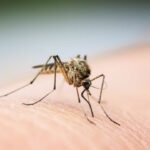On Tuesday, around 33,000 families were still without electricity. Additionally, a number of crucial national arteries, including key highways, are closed, making it difficult for army officers and medics to provide emergency services.
On January 1, 2024, a slew of powerful earthquakes rocked Japan, killing at least thirty people, but officials were still unsure of the exact extent of the devastation. Up to 155 earthquakes have struck the island nation since Monday, the Japan Meteorological Office reported, including a 7.6 magnitude jolt and another more than 6.
Soon after the original earthquake, authorities warned of impending tsunamis, with waves as high as five feet slamming the nation. According to news agency Reuters, some 33,000 households were still without power on Tuesday. Additionally, a number of crucial national arteries, including key highways, are not operating, which makes it impossible for army officers and doctors to provide rescue services.
The preliminary earthquake, which struck in the middle of Monday afternoon with a magnitude of 7.6, forced residents of several coastal areas to evacuate to higher ground as tsunami waves approached the west coast of the nation. Cars and a few houses werehed into the ocean by the waves.

The most recent information about earthquakes in Japan is as follows:
The area of Japan most severely damaged by the earthquakes is the relatively isolated Noto Peninsula, where thousands of army soldiers have been sent. However, damaged and blocked roads have hindered rescue efforts, and one of the area’s airports had to close because of runway faults. According to Reuters, a number of train services and aircraft into the region have also been canceled.
Since a series of earthquakes rocked the nation, 38 flights have been canceled, according to Japan’s Transport Ministry, which also stated that four expressways, two high-speed rail services, 34 local train lines, and 16 ferry lines had been shut down. This was reported by Reuters. However, the Japan Meteorological Office has issued a warning that stronger shocks may yet strike the country in the coming days.
The extent of the devastation caused by the earthquake on Monday and the several that followed was still becoming clear. News images from the scene showed many burned-out homes, buildings that had collapsed, sunken vessels at a port, and people without power freezing as the temperature dropped over night. Sunken boats could be seen in Suzu City’s fishing port in aerial news footage.
Videos showed how the earthquakes in Wajima started a large fire that burned a row of homes. People carrying babies and others carrying blankets were being evacuated in the dark. The Wajima Fire Department’s duty officer claimed that the volume of rescue calls and damage reports was overwhelming them, and that since Tuesday am, the number had been steadily increasing.
According to AFP, which cited the Defense Ministry, tens of thousands of people had been told to evacuate, with roughly 1,000 people staying at a military post. As of Monday night, nearly 97,000 residents of nine prefectures on Honshu island’s western coast had been requested to leave, according to the Japanese government. According to Reuters, these individuals slept in school gymnasiums and sports facilities.

As of Tuesday, some 33,000 homes in the prefecture of Ishikawa were still without electricity. According to NHK, most of the northern Noto peninsula’s regions lack access to water as well. Up to 700 families in the nearby prefecture of Niigata were still without electricity. According to news agency Reuters, West Japan Railway said late on Monday some 1,400 people were still stranded on four halter bullet train trips between Kanazawa and Toyama cities.
Japanese Prime Minister Fumio Kishida told reporters late Monday that he has directed search and rescue teams to use “whatever means available” to reach the earthquake-affected areas. “The search and rescue of those impacted by the quake is a battle against time,” he said during an emergency disaster meeting on Tuesday, in remarks shown on television.
Following the massive quakes in Japan, Russia, South Korea, and North Korea issued tsunami warnings. The western shore of Sakhalin island, as well as the mainland Primorsk and Khabarovsk areas, are under threat from a tsunami, according to the Russian state news agency TASS. Meanwhile, a tsunami measuring less than 3.3 feet struck South Korea’s east coast in the aftermath of Japan’s huge earthquakes. Separately, North Korea issued tsunami warnings for its coast, warning of probable 2-metre-high waves.
US Vice President Joe Biden stated that the US was prepared to provide Japan with any assistance that was required. “As close allies, the United States and Japan share a deep friendship that brings our people together.” “During this difficult time, our thoughts are with the Japanese people,” he continued. The United States and Japan are both members of the Group of Seven (G7).
Japan is prone to earthquakes, and the government has tight laws in place to ensure that buildings can withstand significant jolts, for which it conducts emergency exercises on a regular basis. The most recent quake before Monday’s was on March 16, 2022, with a magnitude of 7.3 off Fukushima that killed two people and injured 94 more. The biggest disaster in the country’s history occurred on March 11, 2011, when a 9.0 magnitude earthquake and tsunami struck northeast Japan, killing over 20,000 people and leaving many more missing. It also caused a meltdown in Fukushima, resulting in one of the biggest nuclear disasters since Chernobyl.











